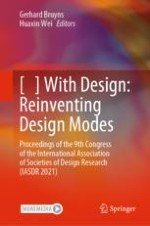2022 | OriginalPaper | Buchkapitel
From Pictorial Statistics to Pictographic Animation: Philip Ragan’s Investigation of Pictographic Animation to Dramatize Facts (1934–1946)
verfasst von : Hisayasu Ihara
Erschienen in: [ ] With Design: Reinventing Design Modes
Verlag: Springer Nature Singapore
Aktivieren Sie unsere intelligente Suche, um passende Fachinhalte oder Patente zu finden.
Wählen Sie Textabschnitte aus um mit Künstlicher Intelligenz passenden Patente zu finden. powered by
Markieren Sie Textabschnitte, um KI-gestützt weitere passende Inhalte zu finden. powered by
